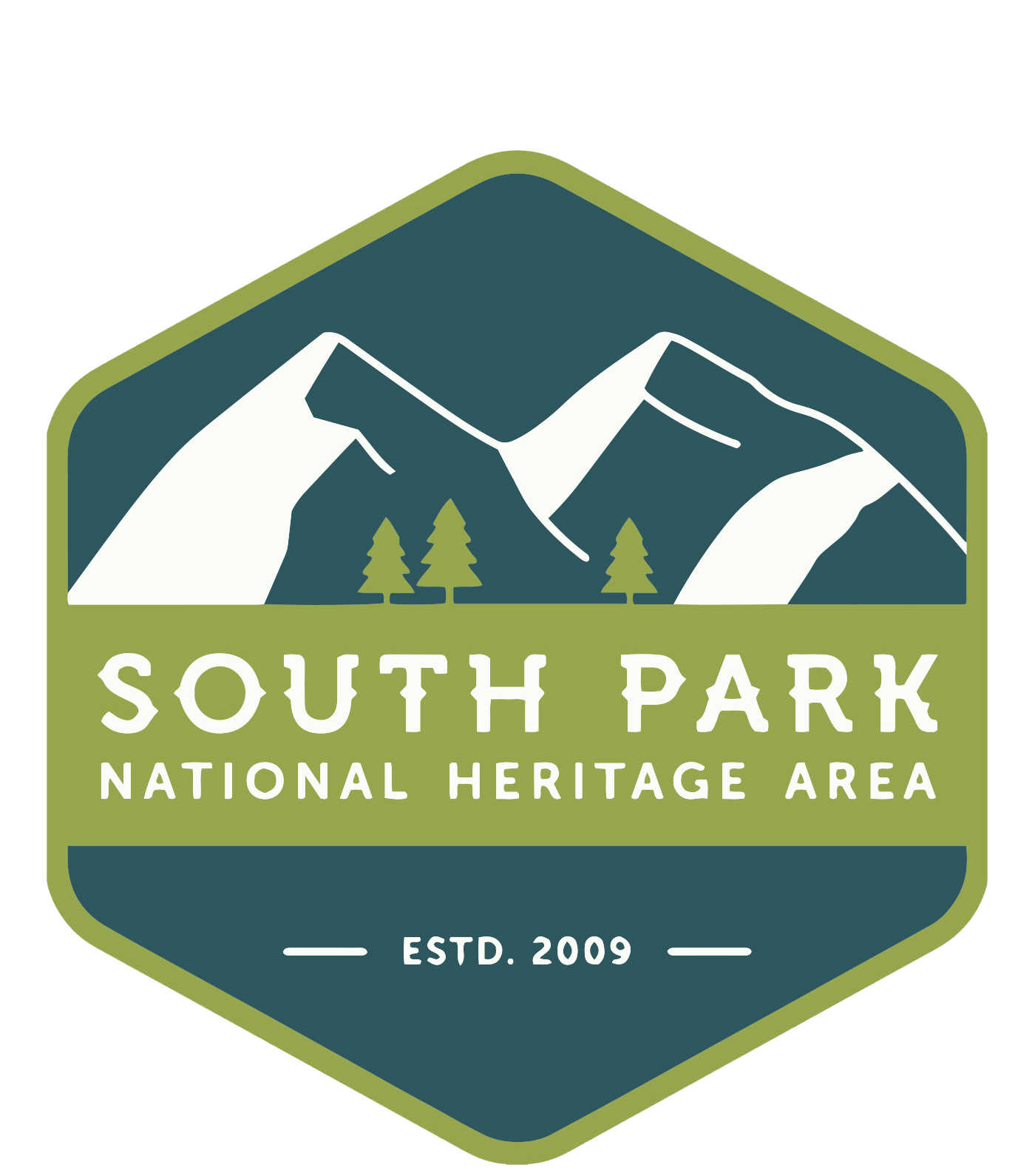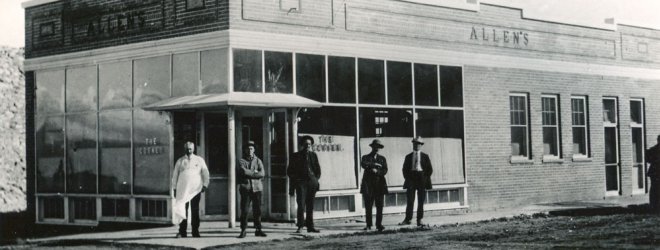Como, located approximately ten miles northeast of Fairplay, was the campsite of hundreds of laborers working on the Denver, South Park & Pacific (DSP&P) tracks across South Park in the summer of 1879. The railroad completed two short branch lines east and west of the main line to reach the coal mines near Como. George Lechner laid out the townsite on what had been the 1860s Stubbs Ranch, one of the earliest enterprises to supply beef and hay to prospectors. The South Park Coal Company filed a plat of the town with the County Clerk and Recorder on 2 July 1879. The railroad facilities on the northeast edge of the town were substantial and Italian stonemasons were imported to build the roundhouse and other stone structures. The frame railroad depot included a waiting room, ticket office, baggage  room, and platform. The business section of the town was focused on one block of Rowe Street between Sixth and Seventh streets next to the railroad facilities, with the residential section spreading to the west and south. According to railroader Sam Speas only employees of the railroad could buy lots or build houses in Como, but the population of the town was augmented by the mining camp of Hamilton. The first train arrived in Como from Denver on June 21, 1879, and the town received its post office on July 23, 1879. Como became the primary division point, repair center, and company town for the DSP&P and opened up South Park and its mines and ranches to transportation.
room, and platform. The business section of the town was focused on one block of Rowe Street between Sixth and Seventh streets next to the railroad facilities, with the residential section spreading to the west and south. According to railroader Sam Speas only employees of the railroad could buy lots or build houses in Como, but the population of the town was augmented by the mining camp of Hamilton. The first train arrived in Como from Denver on June 21, 1879, and the town received its post office on July 23, 1879. Como became the primary division point, repair center, and company town for the DSP&P and opened up South Park and its mines and ranches to transportation.
The town was named for the lake and city in Italy, the original home of many of the Italian coal miners and stonemasons who lived in the area. Some sources state that while Como was the temporary end of the tracks the population rose into the thousands. After the branch line was built to Breckenridge in 1882, the settlement became a division point for the railroad, with some trains going over Boreas Pass to Breckenridge and eventually Leadville and other traffic going over Trout Creek Pass and through the Alpine Tunnel to Gunnison. By the time of the 1880 Census, the permanent population of Como was 134.
In the late 1880s, Como was a busy division point on the DSP&P Railroad, with at least ten trains and as many as twenty-six passing through town every day. Railroad historians report that Como was an “unpopular place to live,” especially for the wives of railroad workers, due to its high altitude (9,775’), long winters, and strong winds. In addition, the cost of living was generally higher at Como. Therefore, the railroad was required to offer extra incentives to secure workers, such as a library, which included a reading room, barber shop, and bathroom. The 1880 Pacific Hotel owned by the railroad suffered from lack of business but provided essential services. In order to ensure continued operation of the facility, the railroad provided free passes to Denver for the hotel proprietor and hauled coal free for the hotel. The building was destroyed by fire in 1896, but the existing replacement hotel was built the following year.
For Como, the period before the railroad reduced and finally ceased operations was a prosperous time. The town’s population of four to five hundred people included about one hundred men who worked in the roundhouse and railroad shops. However, railroad revenues declined during the early twentieth century and many  of the long-time employees found work elsewhere. In 1909 a fire destroyed the facilities housing the railroad shops and they were subsequently moved to Denver, impacting Como with loss of employment and lessening its significance to the railroad. In October 1910, the railroad abandoned its southwest line from Gunnison to Chalk Creek Canyon due to financial problems and the difficulty of keeping the Alpine Tunnel open in winter. The closing of the Alpine Tunnel was a severe blow to Como. By the end of November, many employees had been discharged or transferred, less than fifty families remained in town, and many businesses had closed.
of the long-time employees found work elsewhere. In 1909 a fire destroyed the facilities housing the railroad shops and they were subsequently moved to Denver, impacting Como with loss of employment and lessening its significance to the railroad. In October 1910, the railroad abandoned its southwest line from Gunnison to Chalk Creek Canyon due to financial problems and the difficulty of keeping the Alpine Tunnel open in winter. The closing of the Alpine Tunnel was a severe blow to Como. By the end of November, many employees had been discharged or transferred, less than fifty families remained in town, and many businesses had closed.
In January 1912, about a dozen families remained in Como, and one woman operated a restaurant for trainmen, the only eating establishment in the town. Como’s population steadily declined and in 1926, the railroad reduced its southwest route to Garo Junction which connected Como with Fairplay and Alma. An abandonment request was finally approved in 1936 and service terminated in 1937, when the roundhouse was permanently closed. In 1938, the tracks were pulled up and Como’s population dropped dramatically, reaching a total of thirty-nine in 1950. By the 1960s, Como had become principally a vacation and summer home community, and continues to serve that purpose today although there are a handful of full-time residents.

